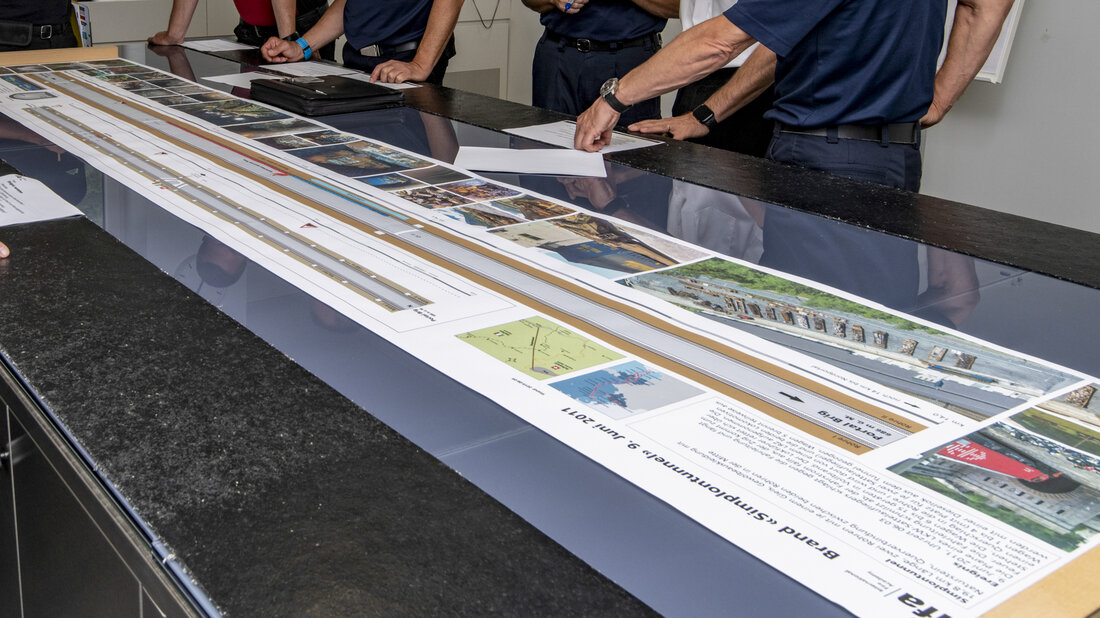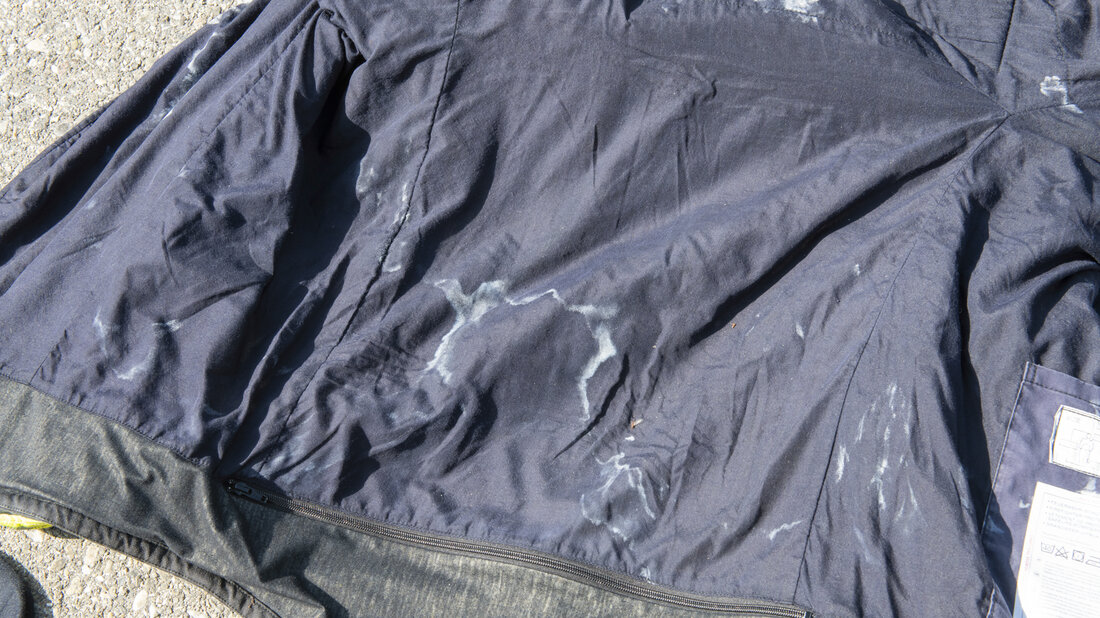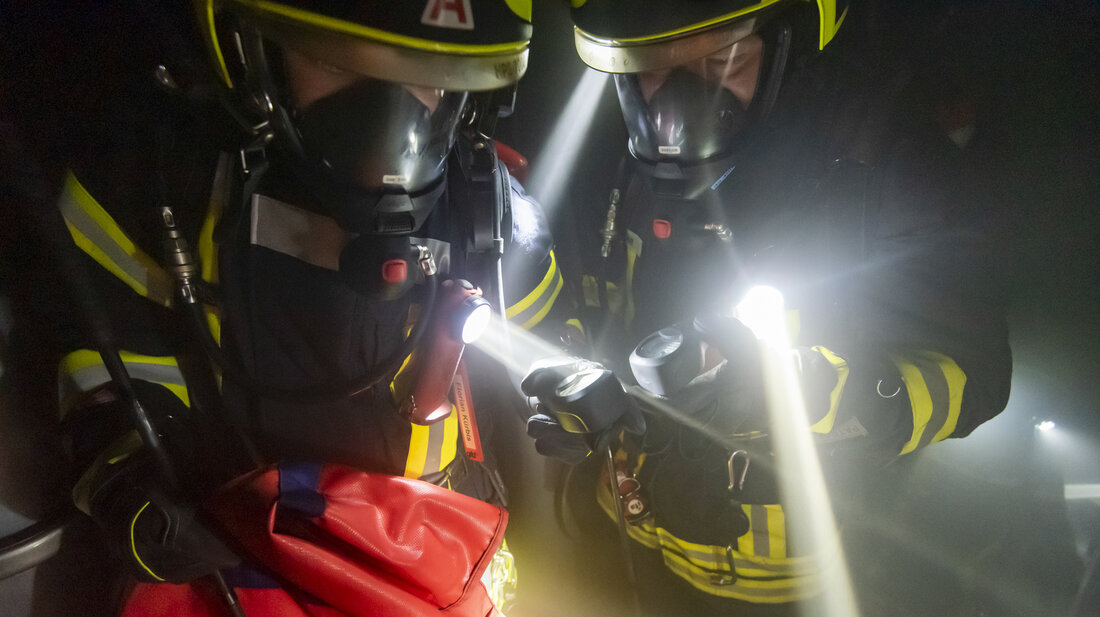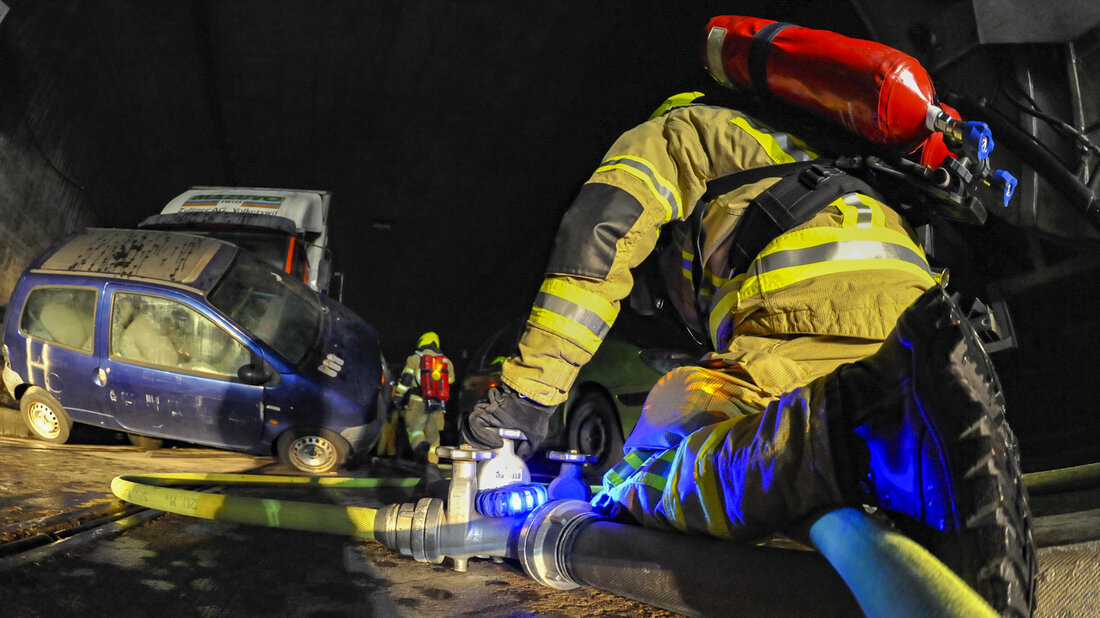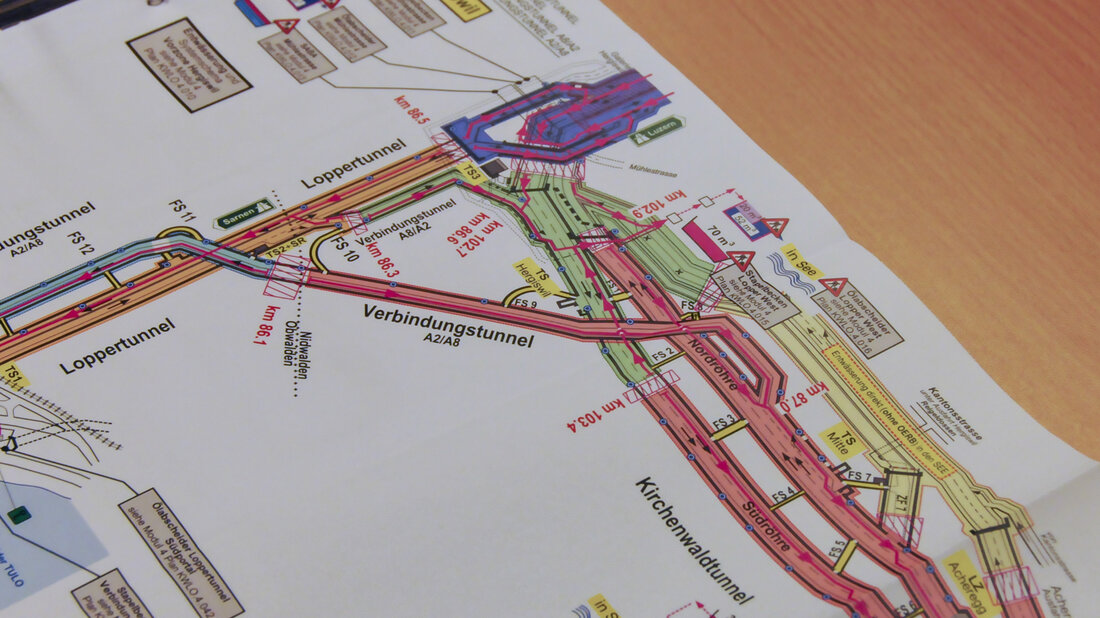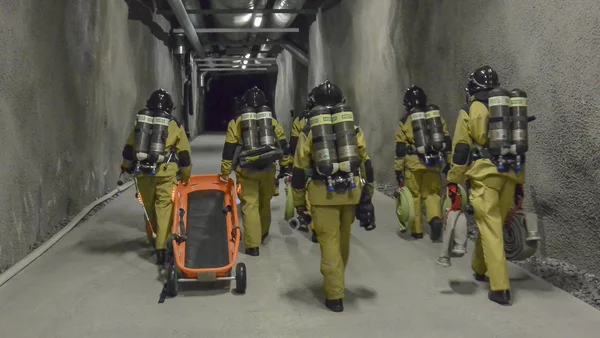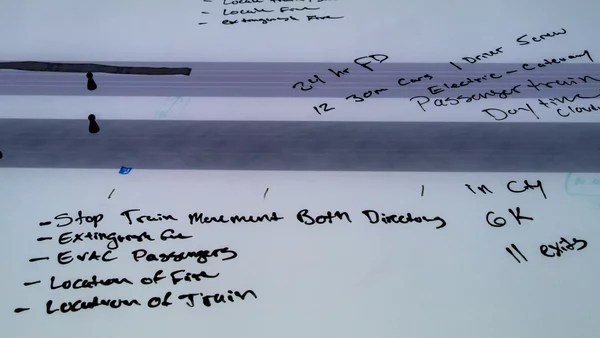
Our goal for the emergency services: Deployment with confidence
Fire operations in underground transport system (UTS) are dangerous. The further the emergency services advance into the smoke, the more likely simple mistakes can have fatal consequences. Our goal is to give firefighters the confidence that they can still meet these enormous challenges.
Fit for the tunnel?
In order to be well prepared for fire operations in traffic tunnels, four essential requirements must be met: The firefighters must be physically sufficiently fit and should have prepared mentally with the expected (decision) situations. They need to master their equipment and know "their" tunnel.
Physical fitness
The usual requirements for the physical fitness of the firefighters also apply to operations in UTS. Being fit for respiratory protective equipment and a sufficiently good daily form are self-evident prerequisites for a deployment. By the way, the biggest stress factor is the combination of long distances and the great weight of the personal protective equipment and the equipment carried along. Although the heat load is also high depending on the situation, it tends to be lower than in the case of a residential fire in rooms with low ceiling height, for example, an apartment or a basement.
Mental preparation
A great help for all emergency personnel is to make foreseeable decisions before deployment and to derive simple rules from them. Most important is: The SCBA team decides by themselves when to turn around in the smoke. And for this alone the safety of the team is decisive. Another important rule, for example, is that a reconnaissance team "only" reconnoiters and does not search and rescue because it is not equipped for it. However, preparation for deployment also includes talking about possible exceptions to rules: If a reconnaissance team finds a helpless person in close proximity to an emergency exit, the team will of course rescue them. This is manageable over short distances even without transport aids.
Mastering equipment
It goes without saying that firefighters have to master their breathing apparatus. This applies twice for operations in UTS, because, for example, you cannot rely on the backup team to be on hand immediately in case of an emergency. Using thermal imaging cameras is one thing; another challenge is to interpret the monitor image correctly. This should be practised intensively by the fire services. Handling search sticks is easy; we recommend that they are also used in residential fires. Then their use becomes routine. The same applies to marking lights.
Know your tunnel
The dimensions of a tunnel system define the demands on the emergency personnel, from the arrangement of parallel tubes and side accesses, the tactical possibilities arise. Therefore, both crew and officers should know "their" tunnel as well as possible. For this, the study of operational plans is helpful, but not sufficient. Many fire services use the regular maintenance work in road tunnels for inspections so that the emergency personnel can grasp their tunnel literally.
Operational drills: Better often and small, than rarely and large
Regular operational drills are required by law for many tunnels. We recommend doing frequent small drills because the learning effect is more sustainable than with rare large drills. Inspections and drills in railway tunnels are relatively rare. Here it is recommended to increase the frequency together with the railway companies and at least to familiarize with the access and the spacial conditions in front of the railway tunnel portals.


